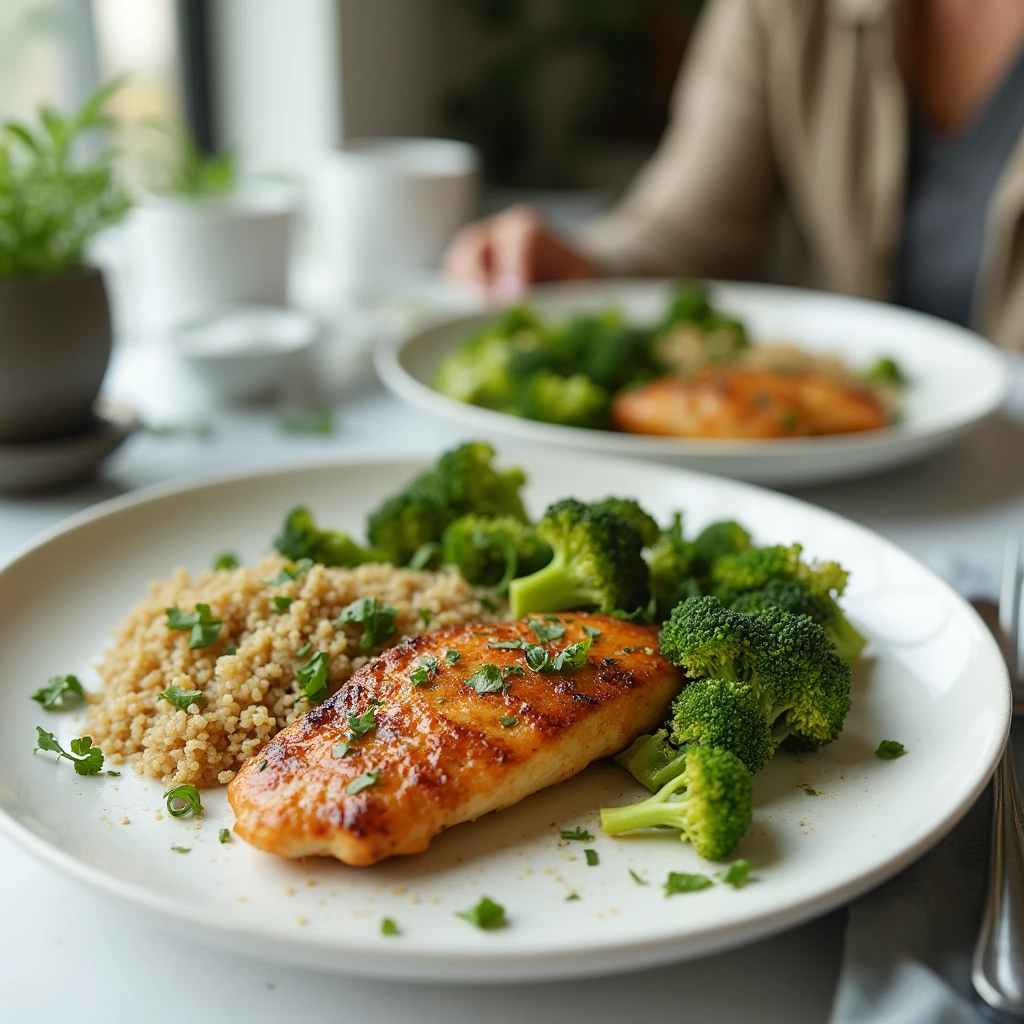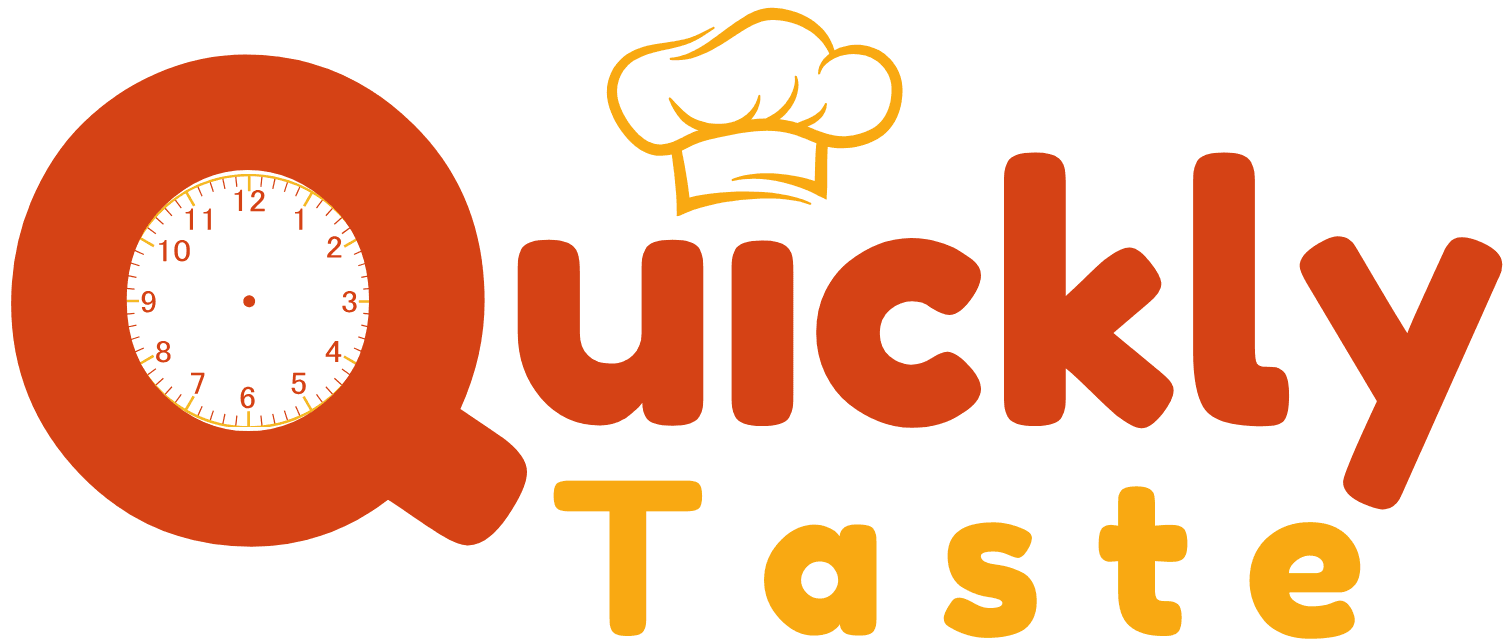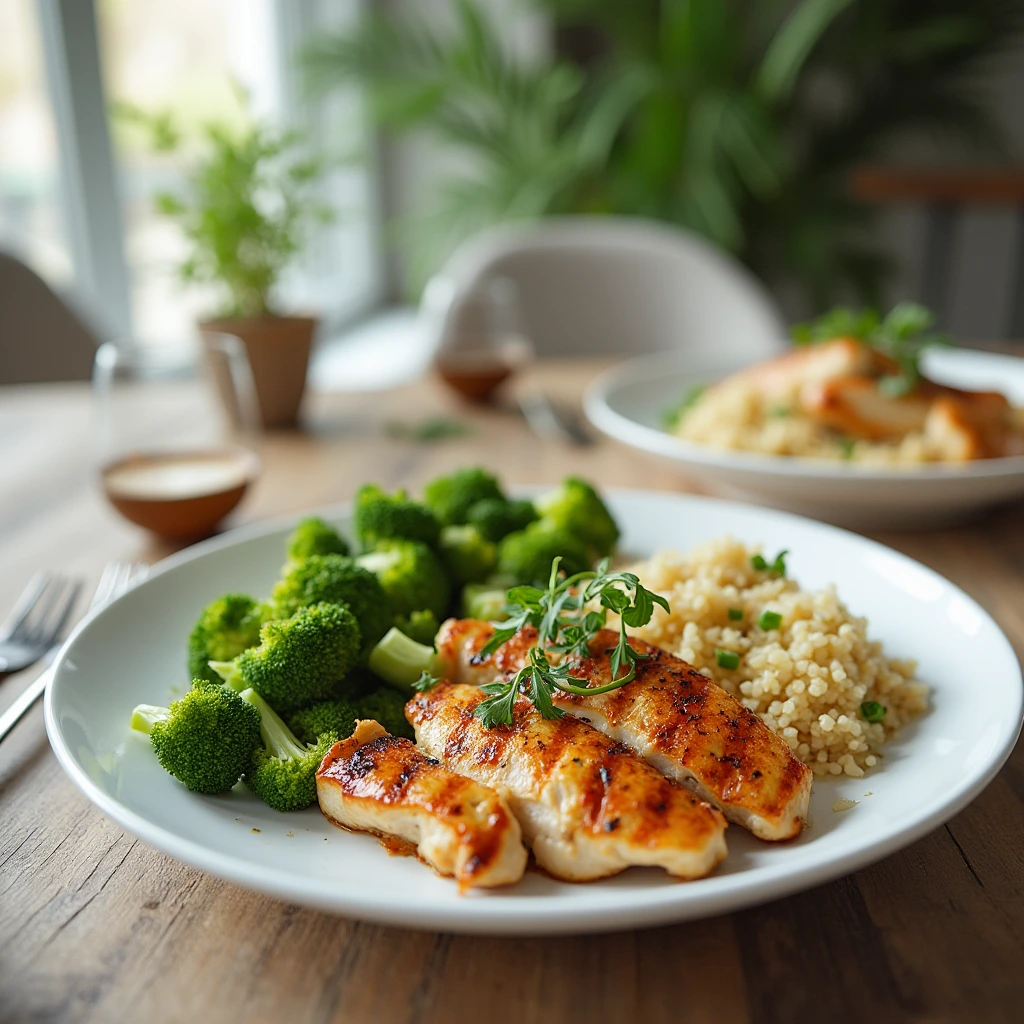Introduction
Protein is a key nutrient essential for maintaining overall health. Including protein-rich foods in dinner is important for muscle repair, satiety, and metabolism. During sleep, the body uses amino acids from protein to aid recovery and repair.

High-protein meals provide several benefits. They help regulate appetite, reduce late-night cravings, and support weight management by promoting fullness. Protein also stabilizes blood sugar levels, preventing energy crashes. Adding foods like lean meats, fish, legumes, tofu, or dairy products to dinner ensures better nutrient intake and overall well-being.
A protein-rich diet improves physical performance, strengthens bones, and boosts immunity. Making high-protein meals a dinner staple supports balanced nutrition and aligns with health and fitness goals.
Benefits of High-Protein Dinners
High-protein dinners offer a range of health benefits, making them an essential part of a balanced diet. They are particularly effective in supporting muscle building and repair. Protein provides the amino acids necessary for muscle recovery after physical activity, helping maintain strength and lean body mass.
Including protein in your evening meal also aids in weight management. High-protein foods promote a feeling of fullness, reducing the likelihood of overeating or late-night snacking. This satiety effect helps control calorie intake and supports long-term weight goals.
In addition, high-protein meals give your metabolism a boost. Digesting protein requires more energy compared to fats or carbohydrates, resulting in a slight increase in calorie burn. This thermogenic effect contributes to overall energy expenditure.
By stabilizing blood sugar levels, high-protein dinners can also help maintain consistent energy levels and prevent nighttime hunger. Incorporating protein-rich options like poultry, fish, eggs, legumes, or plant-based alternatives ensures that your body gets the nutrients it needs to perform optimally.
In summary, high-protein dinners support muscle health, aid in weight management, enhance satiety, and boost metabolism, making them a valuable addition to any healthy lifestyle.
Key Ingredients for High-Protein Dinners
Creating high-protein dinners starts with selecting the right ingredients. Lean meats like chicken and turkey are excellent choices. They are low in fat and packed with high-quality protein, making them perfect for building and repairing muscles.
Seafood is another top option. Salmon, tuna, and shrimp not only provide ample protein but are also rich in omega-3 fatty acids, which support heart and brain health. These versatile ingredients can be grilled, baked, or added to salads and stir-fries.
Plant-based options are equally beneficial for protein intake. Tofu, tempeh, lentils, chickpeas, and black beans are great sources of plant-based protein. They are ideal for vegetarian or vegan meals and provide additional fiber for digestive health.
Eggs are a versatile, nutrient-dense ingredient that can be used in countless dinner recipes. Whether boiled, scrambled, or included in casseroles, they offer a complete protein profile.
Dairy products like Greek yogurt, cottage cheese, and low-fat cheese are also excellent protein sources. They can be incorporated into sauces, side dishes, or as toppings.
By combining these key ingredients, you can create diverse, high-protein dinners that are both nutritious and satisfying, helping you meet your health and fitness goals.
Animal-Based High-Protein Dinner Recipes
Animal-based protein is a cornerstone of many delicious and nutritious dinners. Lean chicken dishes are among the most popular. For example, grilled chicken breast seasoned with herbs or baked chicken stuffed with spinach and low-fat cheese provides a satisfying and protein-rich meal.
Beef recipes are another excellent option for a high-protein dinner. Opt for lean cuts such as sirloin or tenderloin to keep fat content in check. A classic beef stir-fry with colorful vegetables or a hearty steak paired with roasted sweet potatoes delivers both protein and flavor.
Seafood-based meals offer a lighter yet protein-packed alternative. Grilled salmon topped with a lemon-dill sauce is not only rich in protein but also packed with omega-3 fatty acids. Shrimp stir-fries or tuna steaks with a side of quinoa are other quick and healthy options.
These dishes are versatile, allowing you to incorporate a variety of flavors and sides to suit your taste. By focusing on lean meats and seafood, you can prepare satisfying, high-protein dinners that support your health goals while offering plenty of culinary variety.
Plant-Based High-Protein Dinner Recipes
Plant-based high-protein dinners are both nutritious and delicious. A tofu stir-fry is a quick and versatile option. Sauté tofu with a mix of colorful vegetables and a savory sauce made with soy sauce, garlic, and ginger for a protein-packed meal that’s full of flavor.
Lentil curry is another excellent choice. Lentils are rich in protein and fiber, making them a satisfying base for dinner. Simmer lentils with tomatoes, coconut milk, and warming spices like turmeric, cumin, and coriander. Pair it with whole-grain rice or naan for a hearty, plant-based dish.
Quinoa salad with chickpeas is a refreshing yet filling option. Quinoa provides a complete protein, while chickpeas add both protein and texture. Toss them with fresh vegetables, herbs, and a tangy lemon-tahini dressing for a light yet nutrient-dense dinner.
These recipes demonstrate how plant-based ingredients can deliver high levels of protein without sacrificing taste or variety. They are perfect for vegetarians, vegans, or anyone looking to incorporate more plant-based meals into their diet while meeting protein needs.
Quick and Easy High-Protein Dinners
High-protein dinners don’t have to be time-consuming. With a few simple strategies, you can prepare satisfying meals in just minutes. For a quick 15-minute option, try scrambled eggs with sautéed spinach and smoked salmon. This dish is rich in protein and omega-3s, perfect for a fast, nutritious dinner.
One-pan meals are another great solution for busy evenings. A sheet pan chicken and vegetable bake combines lean chicken breast, broccoli, and sweet potatoes seasoned with olive oil and spices. Pop it in the oven, and dinner is ready with minimal cleanup.
Meal prep can also streamline dinner time. Prepare grilled chicken, hard-boiled eggs, or cooked lentils in advance to have ready-to-use proteins. Use these ingredients to build meals like a chicken quinoa bowl or a lentil vegetable soup.
These quick and easy options ensure you meet your protein needs without spending hours in the kitchen. With a little planning and creativity, dinner can be healthy, high in protein, and hassle-free.
Tips for Cooking High-Protein Dinners
Cooking high-protein dinners is simple with the right approach. Start by balancing macronutrients—pair protein sources with healthy fats and complex carbohydrates. For example, combine grilled chicken with quinoa and roasted vegetables for a balanced, nutrient-dense meal.
Seasoning is key to enhancing flavors. Use herbs like rosemary, thyme, or oregano for meats, while soy sauce, garlic, and ginger work well for tofu or seafood. Experiment with spice blends such as curry powder, smoked paprika, or cumin to add depth to your dishes.
The cooking method also matters. Grilling is a great way to prepare lean proteins like chicken or fish, adding a smoky flavor while keeping the fat content low. Baking is perfect for dishes like stuffed chicken breasts or salmon, allowing even cooking without excessive oil. Steaming works well for seafood or plant-based proteins, preserving nutrients and keeping meals light.
By incorporating these tips, you can create delicious, high-protein dinners that are flavorful, nutritious, and easy to prepare.
High-Protein Dinner Ideas for Families
High-protein dinners for families should be nutritious, delicious, and appeal to all ages. Kid-friendly recipes like chicken tenders made with whole-grain breading are a hit. Pair them with roasted vegetables or sweet potato fries for a balanced meal that everyone will enjoy.
Crowd-pleasers like spaghetti with turkey meatballs offer a healthier twist on a classic favorite. Swap traditional pasta for lentil or chickpea pasta to boost protein and fiber content. Another popular option is tacos with lean ground beef, chicken, or black beans, served with a variety of toppings to let everyone customize their meal.
For picky eaters, versatile dishes like build-your-own grain bowls work well. Set up a variety of protein options—grilled chicken, shrimp, or tofu—along with veggies, grains, and sauces. This allows family members to mix and match ingredients to their taste.
These family-friendly high-protein dinner ideas make it easy to satisfy everyone’s preferences while providing the nutrition needed to fuel busy lives.
Low-Calorie High-Protein Dinners
Low-calorie, high-protein dinners are perfect for maintaining a healthy diet without sacrificing flavor or satisfaction. For meals under 500 calories, focus on lean proteins and nutrient-dense sides. Grilled chicken breast with a side of steamed broccoli and cauliflower rice is a simple, low-calorie option. Add a squeeze of lemon or herbs for extra flavor without extra calories.
Seafood is another excellent choice. Try baked salmon served with roasted asparagus and a small sweet potato. Salmon provides protein and healthy fats while keeping calorie counts in check. Alternatively, shrimp stir-fried with zucchini noodles and a light garlic sauce offers a filling yet low-calorie dinner.
To control calories, avoid heavy sauces or fried foods. Instead, use herbs, spices, and low-calorie marinades to enhance flavor. Incorporating high-fiber vegetables helps increase fullness without adding many calories. Cooking methods like grilling, baking, and steaming also help keep meals lighter.
These recipes and tips make it easy to create low-calorie, high-protein dinners that support weight management while keeping you satisfied.
Budget-Friendly High-Protein Dinner Options
Eating high-protein meals doesn’t have to break the bank. Affordable protein sources like eggs, canned tuna, dried beans, and lentils are versatile and cost-effective. Chicken thighs and ground turkey are also budget-friendly options that provide quality protein without the higher price of premium cuts.
Bulk buying can further reduce costs. Purchase larger quantities of staples like frozen chicken breasts, tofu, or legumes, and store them properly to extend their shelf life. Buying whole grains like quinoa or brown rice in bulk ensures you always have affordable, protein-rich sides on hand.
Meal planning is key to saving money. Plan weekly meals around inexpensive protein sources and use leftovers creatively. For example, roast a whole chicken and use the meat in multiple dishes like salads, wraps, or soups. Batch-cook recipes like lentil curry or bean chili to save both time and money.
Combining these strategies allows you to create satisfying, high-protein dinners that fit any budget while meeting your nutritional needs.
Customizing High-Protein Dinners for Dietary Needs
High-protein dinners can be tailored to suit various dietary needs without compromising taste or nutrition. For gluten-free options, focus on naturally gluten-free proteins like chicken, fish, tofu, and eggs. Pair these with sides such as quinoa, rice, or roasted vegetables for a complete meal.
For a keto-friendly dinner, emphasize high-fat, low-carb ingredients. Grilled salmon with avocado salsa or a spinach and cheese-stuffed chicken breast fits perfectly into a keto plan. Avoid starchy sides, opting for low-carb vegetables like zucchini or cauliflower instead.
Vegetarian options can be protein-packed as well. Try lentil-based curries, black bean burgers, or a tofu and vegetable stir-fry. Adding eggs or dairy, such as Greek yogurt or cottage cheese, further boosts protein while keeping meals satisfying.
Vegans can enjoy high-protein meals by using plant-based ingredients like chickpeas, tempeh, or edamame. A quinoa and black bean bowl or a lentil and vegetable stew are hearty, protein-rich vegan choices. Incorporate nuts, seeds, and plant-based protein powders if needed.
Customizing meals with these strategies ensures that high-protein dinners align with individual dietary preferences and health goals, making them accessible for everyone.
FAQs
What dinner has the most protein?
Dinners with the highest protein content typically feature lean meats like grilled chicken breast, turkey, or steak. For example, a dinner of 6 ounces of grilled chicken breast can provide around 40-50g of protein. Adding high-protein sides like lentils or quinoa can further increase the protein content.
How to get 40g of protein in one meal?
To achieve 40g of protein in a meal, combine multiple high-protein ingredients. For instance, pair a 6-ounce portion of grilled salmon (about 40g protein) with a side of quinoa or steamed broccoli, which can add an extra 5-8g of protein. Plant-based options include 1 cup of lentils (18g protein) with 4 ounces of tofu (20g protein).
How to get 30g of protein for dinner?
A simple way to get 30g of protein is to include one main protein source like 4 ounces of grilled chicken breast (30-35g protein) or a cup of Greek yogurt (20g protein) topped with a handful of nuts or seeds (10g protein). Vegetarian options could include a combination of beans, lentils, and grains.
What is an example of a high-protein meal?
An example of a high-protein meal is grilled chicken breast with roasted sweet potatoes and steamed broccoli. For plant-based options, a tofu stir-fry with quinoa and mixed vegetables is a great choice, providing both protein and balanced nutrition.
Additional Ressources
Including external resources can enhance your understanding of high-protein dinners and provide fresh ideas. Websites like Healthline offer evidence-based articles on protein benefits and meal ideas for various goals. For recipe inspiration, BBC Good Food features creative high-protein dishes, while Minimalist Baker focuses on simple vegetarian and vegan options. To track your macronutrients and protein intake, MyFitnessPal is a helpful tool. Budget-conscious cooks can explore affordable, protein-rich recipes at Budget Bytes. For dietary-specific ideas, EatingWell offers a range of gluten-free, keto, and vegetarian recipes. By using these trusted sources, you can expand your high-protein meal options while aligning them with your budget and dietary preferences.
You can discover more recipes on our website:
Conclusion
Incorporating high-protein dinners into your routine offers numerous benefits, from supporting muscle health and weight management to enhancing satiety and boosting metabolism. Whether you choose lean meats, seafood, plant-based proteins, or a combination, there are countless options to suit your tastes and dietary needs.
Consistency is key to reaping the full benefits of a protein-rich diet. Plan your meals ahead, balance your macros, and keep your pantry stocked with affordable, versatile ingredients like eggs, beans, and quinoa. Use cooking techniques such as grilling, baking, or steaming to maintain flavor and nutrition while keeping meals healthy.
Trying new recipes can make the journey exciting and sustainable. Explore ideas for both quick and family-friendly meals, and don’t shy away from experimenting with new flavors or cuisines. With so many delicious and customizable high-protein dinner options, building a healthy and satisfying routine is easier than ever.

